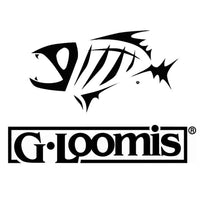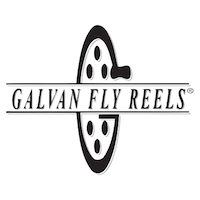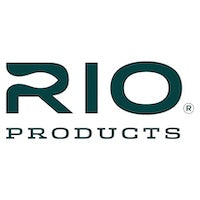
- Part 1: Intro to Kayak Fishing
- Part 2: Choosing a Kayak
- Part 3: Outfitting Your Kayak
- Part 4: Transporting a Kayak
- Part 5: Kayak Storage
- Part 6: Going Fishing

A nice kayak will get you to where the fish are. A nice kayak that is properly rigged and outfitted will get you to where the fish are and help you stalk, hook and land them. We suggest that you buy your kayak from a dealer who sells a range of kayak accessories and can install them for you. If you are unsure as to what you want on your new boat we recommend that you spend some time paddling before you decide to drill any holes. Drilling new holes is much easier than filling in unwanted ones.
The Necessities
There are a few things you absolutely shouldn't be on the water without. Here they are.
The (legal) Essentials
The first thing you will need for your kayak is…no, not a paddle but a life jacket. The second is a whistle. Florida law requires that you have a life jacket and whistle with you and within reach at all times when in a kayak. If you plan on going out at night you will also need a light that can be seen from a good distance. Scotty makes a nice all-around white light that works very well and is specifically intended for kayaks. A good headlight or handlight may also meet the requirements.
Paddle
Next in line comes a paddle. You can get a paddle for as little as $20 or so at a yard sale or a discount sporting goods store. Don’t. A paddle is directly responsible for propelling you and your boat through the water and helping you to position yourself exactly where you want to be. This will be much easier done with a nice paddle. Another advantage to buying a high quality paddle is that you can be relatively certain that it will not fall apart on you when you are 5 miles away from your takeout with an hour and a half of daylight left.
The least expensive paddles that will work well will probably be upwards of $50. These will be heavy but should be well made durable paddles with relatively large blades which will get you moving quickly and let you easily control the boat. As you step up in price, paddles will get lighter, which means that you can use them for longer periods of time without fatigue. We're a fan of the Bending Branches paddles with hard plastic blades and a fiberglass shaft. The plastic blade will take a beating on the oyster bars of the Indian River Lagoon and come through just fine. Your paddle will likely be used not only to push water in the conventional way but, if you fish shallow water, to pole yourself along.
Paddles are sized by length in centimeters. The most common lengths are between 220 and 240 cm. Length is largely a matter of personal preference. Taller people or those who have a flatter stroke tend to like the longer blades.
Pump/Sponge
If you are paddling a sit-inside boat and will be in water over a couple feet deep and more than a very short distance from shore you will want to have a hand pump on board. If you happen to capsize you need to be able to empty the water out before you can continue. A sponge is nice to have to clean up small amounts of water in a sit inside kayak and is handy for cleaning up mud, algae etc. on a sit-on-top boat.
The Non-Essentials (but VERY nice to have)
The following is a list of items which you do not necessarily need to have with you - but some combination of which will make your fishing more fun and much more productive.
Anchor Trolley
An anchor trolley is one of those things that it looks like you could do without (and you can) but once you’ve tried one you will not want to fish without it. An anchor trolley is essentially a pulley system that puts a line stretching from bow to stern on each side of the kayak. You can clip an anchor line, a drift chute, a stakeout pole etc. to a clip or loop in the anchor trolley line and run it to the bow or stern to control how you hang in the wind and current. You can still anchor/stake out without an anchor trolley but, with any wind or current at all, an anchor trolley will make it much easier to position your boat as you wish.
Stakeout Pole
When fishing shallow water a stakeout pole is a great way to anchor your kayak. A graphite golf shaft with the head cut off and a rope fitted through a hole in the handle works great, as does the butt section of an old graphite or fiberglass fishing rod, or a heavy rod blank with a handle on it. When you see a fish or a spot you want to try just push the pole into the bottom and clip the loop to your anchor trolley or something else on your kayak. A stakeout pole can also be used to pole your boat through shallow water. In shallow water while sitting down a 3 1/2 to 4' pole works fine. In deeper water or if you are standing up a pole of 5' or more will be more useful. A stakeout pole is typically a lot quieter than an anchor and much easier to manage in shallow water.
Push Pole
Especially if you stand up while fishing in your boat, a push pole can help you cover more water with more control. The ideal pole length will depend on the depth of water you are fishing and your personal preferences.
Drift Chute
A drift chute is a small parachute-shaped piece of nylon or other material with a hole in the bottom. When there is a strong wind this little device will slow you down to the point where you can actually look for fish and cast as you drift. I don’t use mine much but when I want it I really want it.
Anchor
A small anchor can be very usefull, particularly if you fish deeper water or like to blind cast or if you fish in moving water. You don’t need much weight to anchor a kayak. 1.5 to 5 lbs is adequate in most conditions. An anchor is also nice in the shallows where the bottom is too hard to get a good set with a stakeout pole. Try to find one without moving parts as it will be much quieter. An old downrigger ball, or a similarly small, dense object, would work quite well.
Paddle Keeper
A paddle keeper is usually a piece of bungee cord attached to the kayak at both ends and a slightly offset clip, located on the side of the kayak to the left or right of the cockpit. Just place your paddle on the side of the boat, pull the bungee cord over and hook it over the clip. These are great to have when you want to get your paddle completely out of the way.
Paddle Leash
A paddle leash is exactly what it sounds like: a length of material (usually bungee cord encased in nylon webbing) that attaches your paddle to the kayak. Some people consider a paddle leash essential for sight fishing. Once they have spotted their quarry they will set the paddle in the water next to them and let the leash keep track of it.
Rod Holders
When you are actually fishing you will probably hold your rod in your lap but while traveling from place to place a rod holder is very convenient and will let you easily bring more than one rod with you. There are two main types of rod holders: flush mount rocket launcher style holders (for spinning rods and baitcasters) and deck mount varieties, which work for both fly rods and spinning and baitcast rods. These are easy to install (if you have the proper tools) and greatly add to the functionality of your boat.















Comments